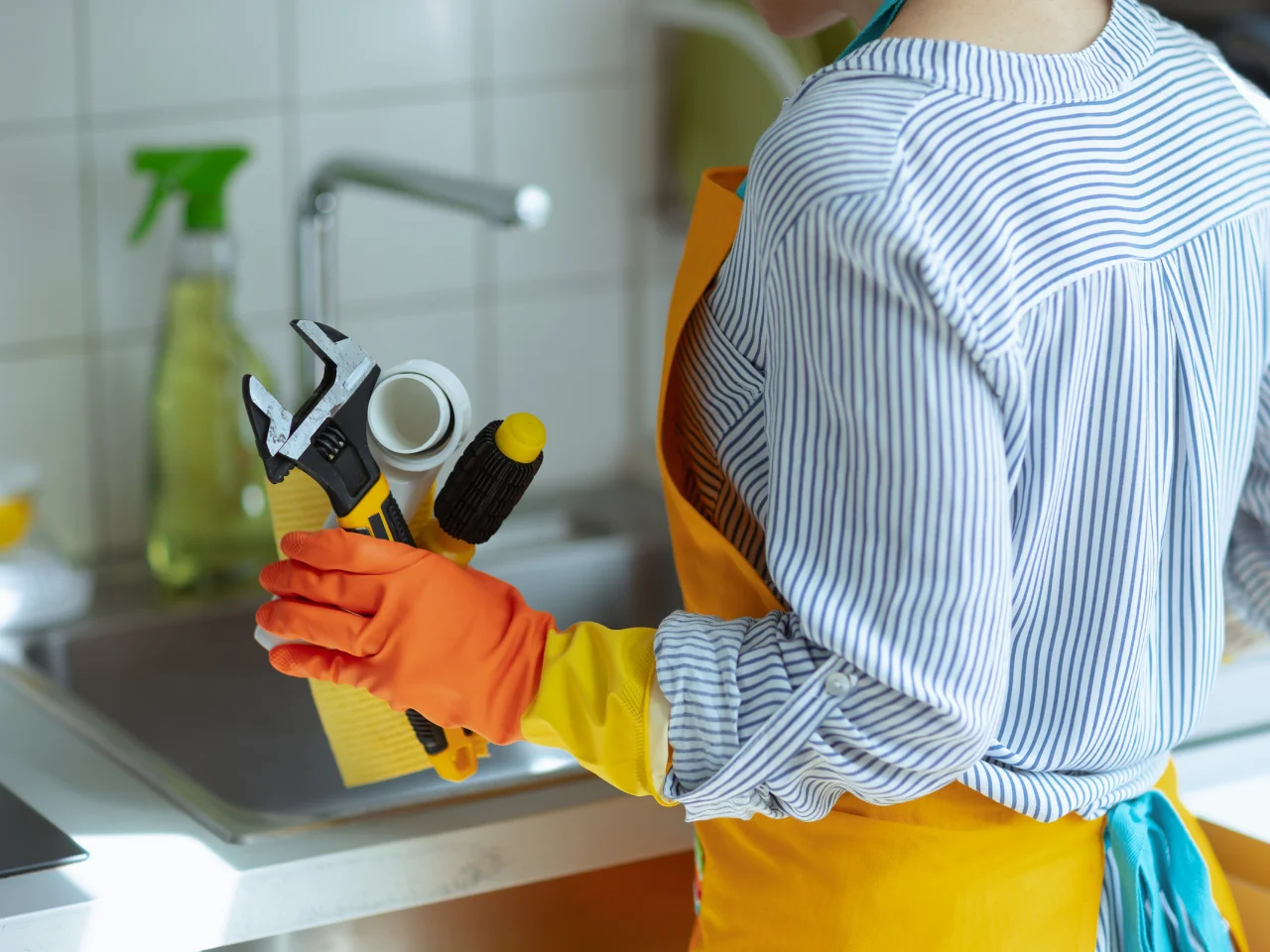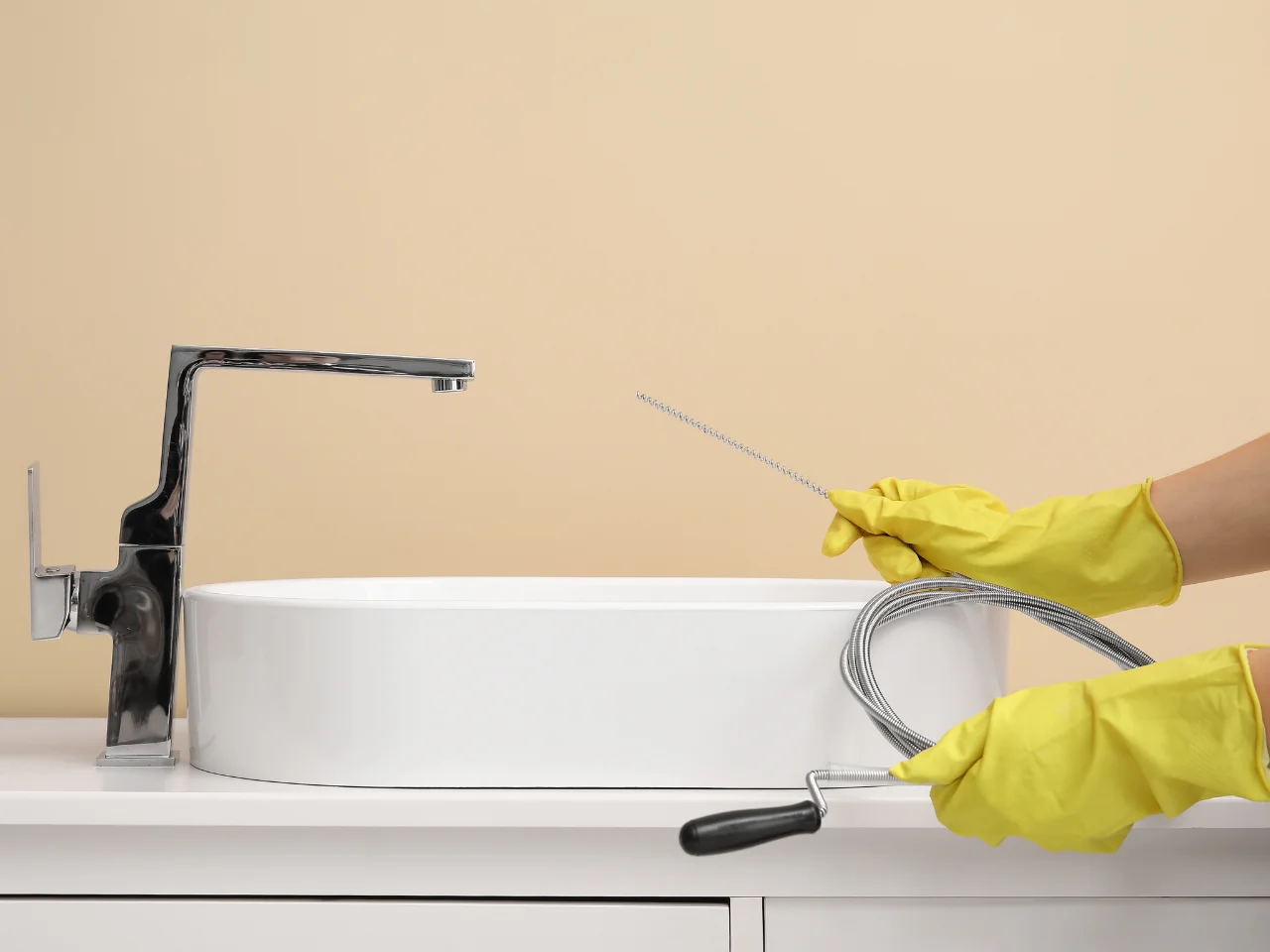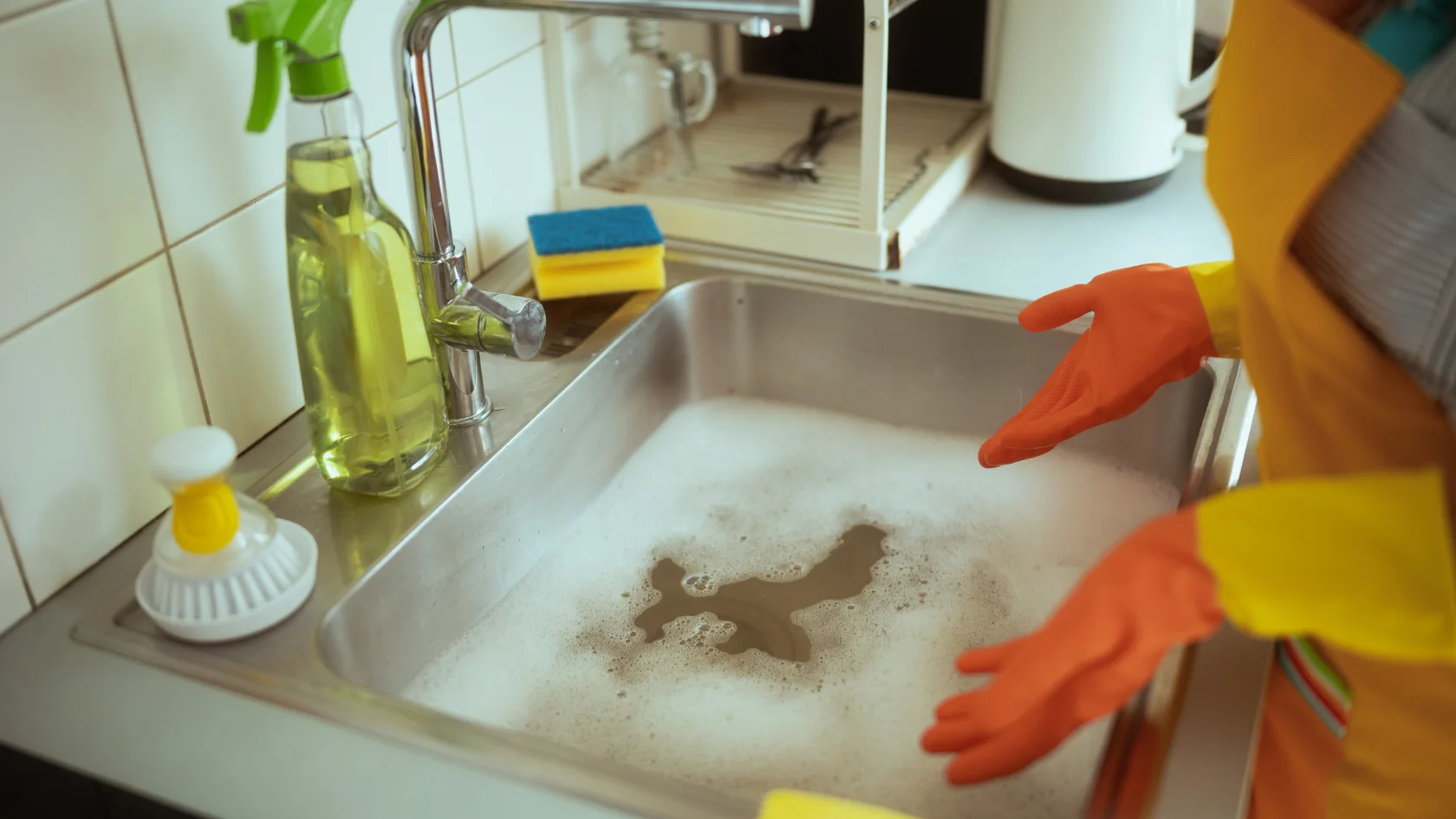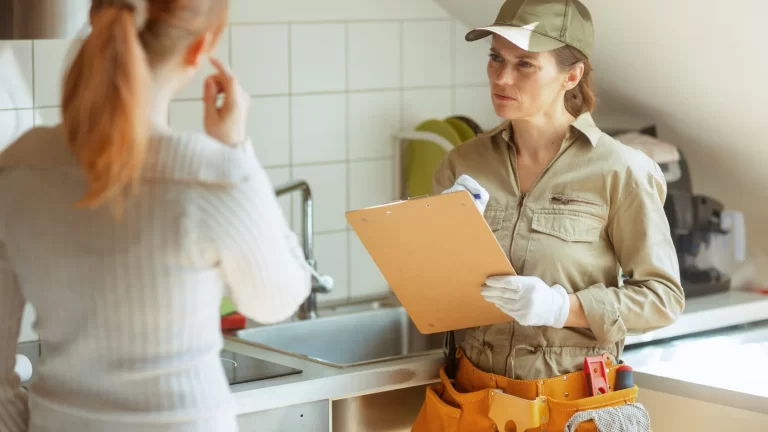It always starts the same way — the water in your sink or shower begins draining slower than usual. Before you know it, you’re staring at standing water that won’t budge, no matter how much you try to flush it down. If you’re dealing with a clogged drain, you’re not alone — it’s one of the most common plumbing problems homeowners in Toronto face.
If you overlook a clogged drain, it can ruin your day, cause offensive odours, and even lead to water damage. The good news is, there are safe and effective ways to unclog a drain using simple household materials — and if that doesn’t work, professional plumbers in Toronto like Absolute Draining & Plumbing are always ready to help.
In this blog, we’ll cover everything you need to know about how to unclog a drain. You’ll learn why clogs happen, the most reliable DIY methods (like using baking soda and vinegar, boiling water, or a plunger), and when it’s time to call a professional plumber. We’ll also provide you with helpful advice on how to avoid future drain blockages so you can maintain the year-round functionality of your plumbing system.
Got a stubborn clog that just won’t go away? Contact us today for professional plumbing help in Toronto, Etobicoke, Mississauga, and across the GTA.
Why Drains Get Clogged in the First Place

Before learning how to unclog a drain, it’s important to understand what causes the problem. Most clogged drains start small — a bit of grease here, a clump of hair there — until the buildup becomes large enough to block the water flow completely.
Here are the most common causes of a clogged drain:
- Hair and soap scum: Hair and soap residue in showers and bathtubs combine to form a sticky substance that adheres to the inside of pipes.
- Grease and oil: In kitchen sinks, cooking grease and fats solidify as they cool, coating your pipes and catching debris.
- Food scraps: Even small food particles can build up over time, especially in kitchen drains that don’t have a strainer.
- Foreign objects: Cotton swabs, paper towels, or small items accidentally flushed down the drain can create tough blockages.
- Mineral buildup: Your pipe holes may gradually expand due to mineral deposits from hard water.
- Tree roots or sewer issues: For older Toronto homes, roots growing into the main drain line can lead to serious blockages.
Knowing the cause and source helps you choose the right unclogging method. For instance, a drain snake or boiling water are frequently effective ways to clear hair-based blockages, but vinegar and baking soda may be necessary for grease and food obstructions in the kitchen sink.
Step-by-Step: How to Unclog a Drain at Home

Let’s walk through several proven methods to clear a clogged drain safely. You can often fix minor blockages using basic tools and household supplies.
1. Try Boiling Water Down the Drain
Boiling water can help loosen and dissolve certain types of buildup — especially soap scum or grease in kitchen sinks.
Here’s how to do it:
- Boil a full kettle or large pot of water.
- Gradually pour the boiling water down the drain (not all at once).
- Wait for about 10 minutes, then run hot tap water to see if the blockage has cleared.
If the water drains slowly, repeat the process once or twice. Boiling water works best for mild clogs, but it won’t help much if standing water has already accumulated above the drain opening.
Pro tip: Avoid pouring boiling water into porcelain sinks or PVC pipes if you’re unsure about their durability — use very hot (not boiling) water instead.
2. Use a Baking Soda and Vinegar Drain Cleaner
Baking soda and vinegar are two of the best and most environmentally friendly ways to unclog a drain. These natural substances create a bubbling response that helps clean the drain walls, remove debris, and dissolve grease.
Materials:
- 1 cup baking soda
- 1 cup white vinegar
- 1 kettle of boiling water
- A drain stopper or rag
Step-by-step:
- Fill the drain with one cup of baking soda.
- Follow it with one cup of vinegar.
- To stop the fizzing reaction, plug the drain right away with a towel or stopper.
- Wait 10–15 minutes as the mixture breaks down the clog.
- Finally, flush away any leftover residue by pouring boiling water down the drain.
This natural solution works well for kitchen and bathroom drains — and it helps eliminate smelly odours too. However, if the drain is completely blocked with standing water, you may need to remove as much as possible with a bucket before applying this method.
3. Plunge the Drain
If boiling water and baking soda don’t get the job done, it’s time to pull out the plunger. This method works for both sinks and tubs and relies on suction to dislodge obstructions.
How to plunge a drain:
- Remove any stopper or plug from the drain.
- Fill the sink or tub with enough water to cover the plunger’s rubber cup by one or two inches.
- To create a seal, place the plunger firmly over the drain opening.
- Push down and pull up forcefully about 10–15 times, maintaining suction.
- Quickly lift the plunger — you may hear the satisfying gurgle of water starting to flow again.
If you see bubbles rising or the water begins draining faster, the clog has likely been cleared.
4. Try a Drain Snake or Auger
For tougher clogs deep in your pipes, a drain snake (also referred to as a plumbing auger) can help dislodge or remove the blockage completely.
Here’s how to use it:
- Put on disposable gloves for hygiene.
- If the snake encounters resistance after being inserted down the drain, it is clogged.
- Twist and push the snake gently to break apart or hook onto the debris.
- Pull the snake out carefully, disposing of any gunk that comes with it.
- Run hot water down the drain to flush everything through.
Drain snaking can remove hair, soap scum, or even small objects lodged in the drain. For very stubborn blockages, an electric auger or professional-grade snake may be required — something best left to a professional plumber.
5. Use a Drain Cleaner (with Caution)
If all else fails, you may consider a chemical drain cleaner. These products contain sodium hydroxide or similar ingredients that dissolve organic matter. However, they must be used carefully, as harsh chemicals can damage older pipes and pose health risks.
Tips for safe use:
- Always read the label and make sure you follow the directions precisely.
- Chemical cleaners should never be combined with vinegar, baking soda, or other ingredients.
- Make sure there is enough airflow and put on gloves.
- Avoid regular use, as chemical cleaners have the potential to erode metal pipes over time.
If you’re an eco-conscious homeowner, utilize natural remedies like vinegar and baking soda or hire a professional who uses safe, efficient drain cleaning equipment.
When to Call a Professional Plumber in Toronto

Sometimes, despite your best DIY efforts, a clogged drain just won’t clear. That’s when you need to bring in a professional plumber to prevent further damage.
Here are signs it’s time to call an expert like Absolute Draining & Plumbing:
- Repeated clogs: If your sink or tub keeps clogging even after cleaning, you may have a deeper issue in the main drain line.
- Slow drains throughout the house: Multiple slow drains can indicate a clog in the main sewer pipe, not just one fixture.
- Foul odours: Persistent smells coming from your drain or overflow could mean trapped debris or bacterial buildup.
- Standing water or backups: If water is coming up from other drains when you flush or use the sink, there’s likely a major obstruction in your drainage system.
- Gurgling sounds or bubbling: Air trapped in blocked pipes causes these noises — a clear sign of a developing clog.
To find and remove even the most difficult clogs without causing damage to your drain pipes, professional plumbers use specialized equipment such as power augers, hydro-jetting machines, and video inspection cameras.
At Absolute Draining & Plumbing, our team uses advanced methods to clear drains safely — often without digging or dismantling fixtures. Plus, we offer flat-rate pricing, free consultations, and a 25-year warranty on drain repair, so you know exactly what to expect before the work begins.
Reach out to our trusted plumbers serving Toronto, Etobicoke, Mississauga, and nearby GTA areas for prompt and reliable drain cleaning and repair.
How to Prevent Future Drain Clogs

Here are some practical tips to maintain clear drains and prevent more plumbing issues.
1. Use Drain Strainers or Catchers
Install food strainers in kitchen sinks and hair catchers in showers to collect garbage before it enters your drain lines.
2. Avoid Pouring Grease or Oil Down the Drain
Grease covers the pipe walls and gathers additional particles as it cools and solidifies. Rather, move the grease into a container and dispose of it separately as it solidifies.
3. Flush Your Drains Regularly
Run hot water down the drain every few weeks to remove residue. Rinse with boiling water after using a mixture of vinegar and baking soda.
4. Keep Large Food Scraps Out of the Sink
Even with a garburator or garbage disposal, avoid grinding fibrous or starchy foods like celery, potato peels, or rice — they tend to clump and cause blockages.
5. Clean Your Drain Vents
Blocked plumbing vents can slow down drainage and cause gurgling noises. If you suspect a vent issue, it’s best to have a professional inspect and clear it.
6. Schedule Regular Drain Inspections
Annual or semi-annual drain inspections by a professional plumber can help detect early signs of buildup, corrosion, or tree root intrusion in your main drain line.
By doing these things, you can keep your plumbing system in good condition and stay away from the trouble (and stench) that comes with a clogged drain.
Why Professional Drain Cleaning Matters

DIY remedies can be effective for small clogs, but they may not tackle the underlying issue. Over time, residue, grease, and debris can accumulate deep within your pipes — areas that home remedies can’t reach.
Professional drain cleaning services use specialized equipment such as:
- Hydro-jetting machines blast high-pressure water through the pipes to clear tough obstructions and flush out buildup.
- Video drain cameras that inspect the inside of pipes to locate cracks, leaks, or hidden blockages.
- Power augers that go deeper than manual snakes to remove stubborn clogs.
Hiring a professional ensures your drains are cleaned thoroughly, improving flow, eliminating odours, and reducing the risk of major plumbing issues down the road.
Absolute Draining & Plumbing offers full drain cleaning and repair services across Toronto, Etobicoke, and Mississauga, backed by over 20 years of experience. We’ve helped countless homeowners fix clogged drains, replace damaged pipes, and even qualify for city rebate programs for flood protection and backwater valve installation.
Need help unclogging your drain or preventing future blockages? Our skilled team serves homeowners throughout Toronto, Etobicoke, Mississauga, and the rest of the GTA. Get in touch with us today!
Keep Your Drains Flowing with Absolute Draining & Plumbing
Although dealing with a clogged drain can be annoying, you can avoid it becoming a costly plumbing issue if you have the proper information and expert assistance. Our professional plumbers at Absolute Draining & Plumbing have the knowledge, equipment, and dedication to complete any task, whether it involves a clogged main drain, a slow kitchen sink, or a backed-up tub.
We’ve been helping Toronto homeowners with drain cleaning, plumbing repairs, and flood protection services for over two decades. Your plumbing system is in capable hands with our local, licensed team’s flat-rate pricing, free estimates, and 25-year drain repair warranty.
Don’t let a clogged drain disrupt your day — contact Absolute Draining & Plumbing today for reliable, affordable service anywhere in Toronto and the GTA.







